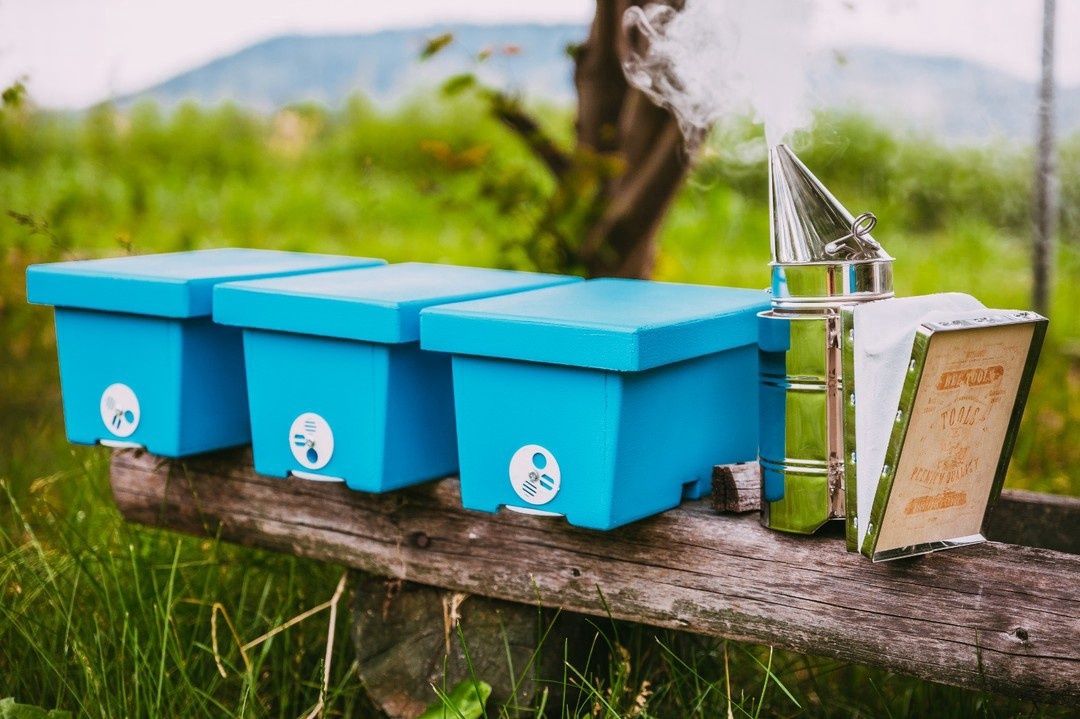Mini nucleus hive, polystyrene, painted
$75.00
Price incl. GST (15%) $9.78
In stock: 113 available
Product Details
Brand: LYSON
Composition of the wedding bouquet:
- bottom connected to the body
- 4 frames and a feeding chamber
- peak
- set of frames - 4 pieces
- set of outlet plugs (wheels)
dimensions:
- length: 26.5cm - 30cm.
- width: 14.5cm - 21.5cm.
- height: 17.5cm.
How to Use a Queen Rearing Nuc / Mini Nucleus Colony
A queen rearing nuc, also known as a mini nucleus colony, is a smaller version of a standard beehive used for the specific purpose of rearing queen bees. The process of using a queen rearing nuc typically involves the following steps:
- Setting Up the Mini Nuc: The mini nuc is prepared by ensuring it has frames for the bees to build comb on, as well as a compartment for food, which can be filled with syrup, fondant, or damp granulated sugar.
- Stocking with Bees: Young worker bees are added to the mini nuc. Young bees are preferred as they are more likely to stay and rear new brood once the queen starts laying.
- Adding a Queen Cell: After the bees have been given a few hours to settle, a near-to-emergence queen cell is added, or a virgin queen is introduced through the entrance.
- Placement: The mini nuc is placed in a mating apiary, away from queenright hives to prevent the loss of bees. It should be situated in a location that avoids overheating, such as dappled shade.
- Monitoring: The mini nuc is monitored for the emergence and successful mating of the queen, which typically occurs 7-10 days after the queen emerges.
- Harvesting the Mated Queen: Once the queen is mated and laying, she is removed and can be introduced to a new colony or used to replace an old queen in an existing hive.
- Repeating the Process: The process can be repeated by adding another near-to-emergence queen cell to the mini nuc for continuous queen rearing throughout the season.
Benefits of Using a Queen Rearing Nuc / Mini Nucleus Colony
- Resource Efficiency: Mini nucs require fewer resources compared to using full-sized colonies for queen mating, making them cost-effective.
- Multiple Queens: With good organisation and timing, several queens can be reared from a single mini nuc in one season.
- Ease of Management: Mini nucs are small, lightweight, and easy to handle, which simplifies the queen rearing process.
- Good Insulation: Mini nucs like the styropianowy nuc provide excellent thermal conditions for queen rearing.
- Versatility: Mini nucs can also serve as transporters for small bee families or for holding reserve queens.
Uses of Queen Rearing Nuc / Mini Nucleus Colony
- Queen Mating: The primary use of mini nucs is for the mating of virgin queens.
- Queen Rearing: They are used to rear queens for use in other colonies or for sale.
- Swarm Control: Mini nucs can be used as part of swarm control strategies by housing the old queen or new queens.
- Colony Increase: They can be used to increase apiary size by creating new colonies with the reared queens.
- Overwintering Queens: With proper care, queens can be overwintered in mini nucs, ready for use in the following season
Save this product for later
Customer reviews
Reviews only from verified customers
No reviews yet. You can buy this product and be the first to leave a review.
Mini nucleus hive, polystyrene, painted
Display prices in:NZD

